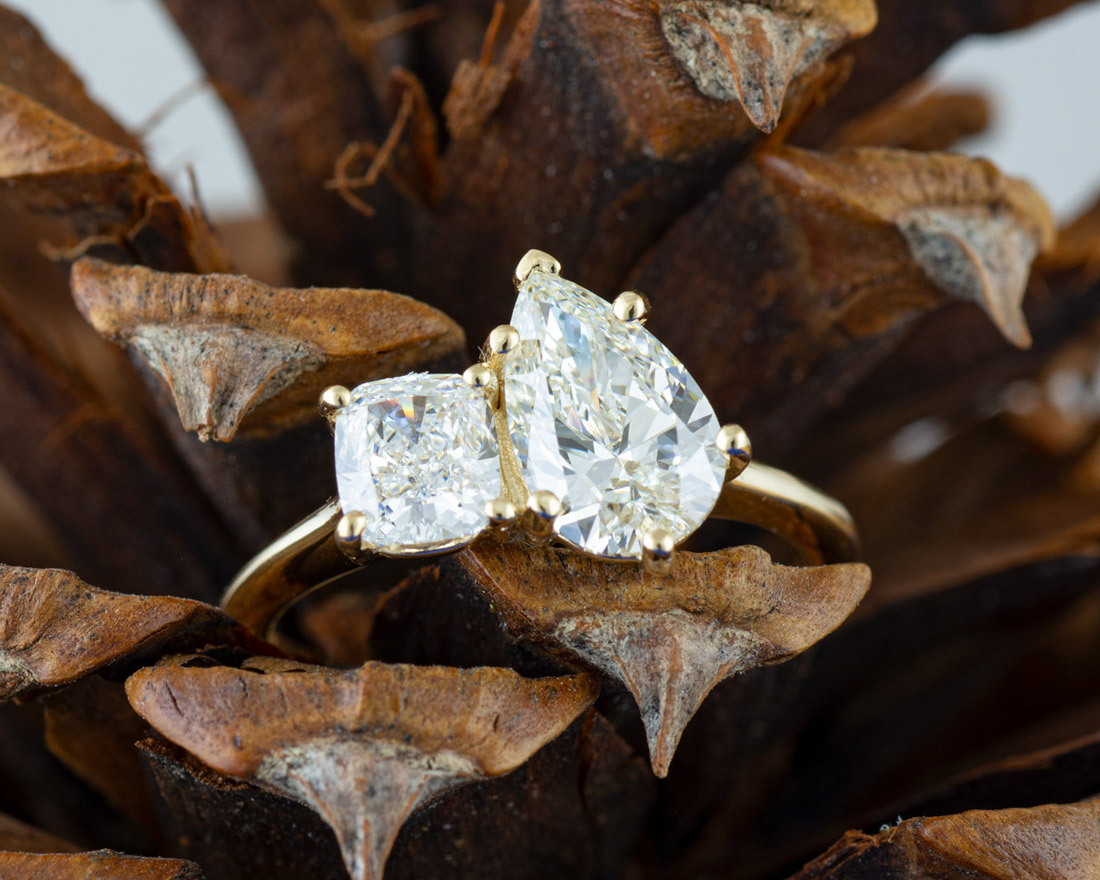When choosing the perfect engagement ring, wedding band, or special occasion piece, two of the most common metals to consider are platinum and gold. Both are popular choices, but when paired with lab-grown diamonds, their qualities and benefits stand out even more. In this article, we’ll compare platinum and gold lab-grown diamond rings, helping you make an informed decision based on your preferences, lifestyle, and budget.
Understanding Lab-Grown Diamonds
Before diving into the comparison of platinum and gold rings, it’s essential to understand what lab-grown diamonds are. Lab-grown diamonds, also known as synthetic or cultured diamonds, are created in controlled laboratory environments using two methods: High Pressure High Temperature (HPHT) and Chemical Vapor Deposition (CVD). These diamonds are chemically, physically, and optically identical to natural diamonds but are often more affordable and eco-friendly.
The Case for Platinum Lab-Grown Diamond Rings
Durability and Longevity
Platinum is one of the most durable precious metals, making it an excellent choice for a platinum vs gold lab grown diamond rings. Its naturally dense and heavier properties mean it’s less likely to scratch or tarnish over time. If you want a ring that can withstand the test of time, platinum offers a timeless, high-quality option.
Appearance and Shine
Platinum has a naturally white hue, which perfectly complements the brilliance of a lab-grown diamond. The metal’s color doesn’t change over time, unlike white gold, which can sometimes develop a yellowish tinge as it wears. Platinum’s luster can also help enhance the diamond’s sparkle, making it an ideal choice for those who want a sophisticated, shiny ring that lasts.
Hypoallergenic Properties
If you have sensitive skin or allergies, platinum is an excellent option. It is hypoallergenic, meaning it won’t cause irritation or allergic reactions. This is a significant advantage over some gold alloys, which may contain nickel—a common allergen.
The Cost of Platinum
One of the main downsides of platinum is its price. Platinum is denser than gold, meaning it requires more metal to create a ring of the same size. As a result, platinum rings tend to be more expensive than gold rings. However, this price difference is often seen as an investment in quality and longevity.
The Case for Gold Lab-Grown Diamond Rings
Versatility and Customization
Gold is highly versatile, available in a variety of shades, including yellow, white, and rose gold. This flexibility allows you to customize the ring to your unique preferences. Whether you prefer the warm, traditional look of yellow gold or the modern, sleek appearance of white or rose gold, gold offers various options to suit any style.
Affordability and Accessibility
Gold is generally more affordable than platinum, making it a more budget-friendly option for many people. Lab-grown diamond rings paired with gold are often less expensive, offering excellent value without sacrificing quality. If you’re looking for a high-quality piece at a more accessible price point, gold might be the way to go.
Durability and Maintenance
Gold, especially in its 18k or 14k forms, is durable enough to last a lifetime. However, gold is softer than platinum, meaning it may scratch more easily, particularly in its yellow and rose forms. White gold, on the other hand, is often alloyed with metals like palladium, making it stronger and more resistant to wear and tear.
The Color of Gold
Gold’s natural color adds warmth to the lab-grown diamond’s sparkle. Yellow gold, for example, can make diamonds appear warmer, while white gold enhances the diamond’s colorless appearance. If you like the idea of a metal that can influence the tone of the diamond, gold provides a perfect combination of beauty and versatility.
Platinum vs. Gold Lab-Grown Diamond Rings: A Comparison
| Feature | Platinum | Gold |
|---|---|---|
| Durability | Highly durable, resistant to scratching | Less durable than platinum, more prone to scratches (especially yellow and rose gold) |
| Appearance | White, maintains luster over time | Comes in various colors: yellow, white, rose gold; may require rhodium plating (for white gold) |
| Hypoallergenic | Hypoallergenic | Gold alloys (especially yellow) can cause allergic reactions in some individuals |
| Price | Generally more expensive | More affordable, but varies depending on karat and type |
| Weight | Heavier, denser | Lighter than platinum, but depends on gold purity |
| Maintenance | Low maintenance, does not tarnish easily | May require more frequent polishing or replating (white gold) |
| Eco-Friendliness | Highly sustainable, especially when responsibly sourced | Also sustainable, especially with recycled gold options |
Which Metal Should You Choose?
Choosing between platinum and gold for your lab made diamonds ring ultimately depends on your preferences and lifestyle. Here are some things to consider when making your decision:
Choose Platinum If:
- You want a durable, long-lasting ring that requires minimal maintenance.
- You prefer a naturally white metal that won’t change color over time.
- You have sensitive skin or allergies and need a hypoallergenic option.
- You are willing to invest in a higher-end piece that will stand the test of time.
Choose Gold If:
- You’re looking for a more affordable option without compromising on beauty.
- You want flexibility in terms of color (yellow, white, or rose gold).
- You prefer a lighter metal and enjoy customization options.
- You don’t mind occasional maintenance or replating (for white gold).
Conclusion: Platinum vs. Gold Lab-Grown Diamond Rings
Both platinum and gold lab-grown diamond rings have their unique advantages. Platinum offers unmatched durability, hypoallergenic properties, and a timeless appearance, making it a solid investment for those seeking a long-lasting, high-quality ring. On the other hand, gold is a versatile, affordable option that allows for more customization and can still provide a stunning look.
Ultimately, your choice will depend on your priorities, whether that’s cost, durability, appearance, or hypoallergenic properties. By considering the pros and cons of each metal, you’ll be able to select the perfect lab-grown diamond ring that reflects your personal style and commitment.






:max_bytes(150000):strip_icc()/alekon-pictures-yj4kwA4h_Ms-unsplash-230509491f114970902d0e9aefb37850.jpg)



